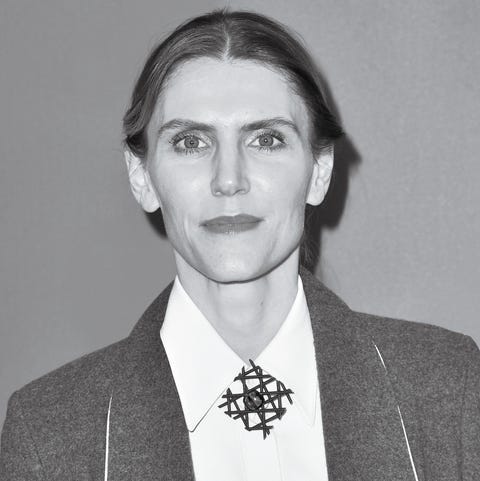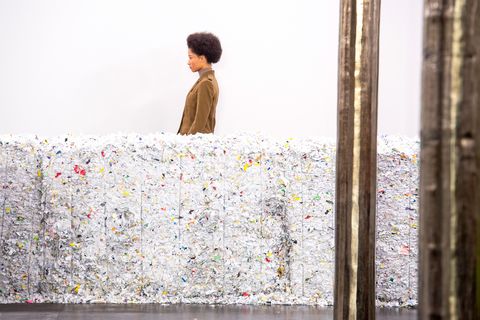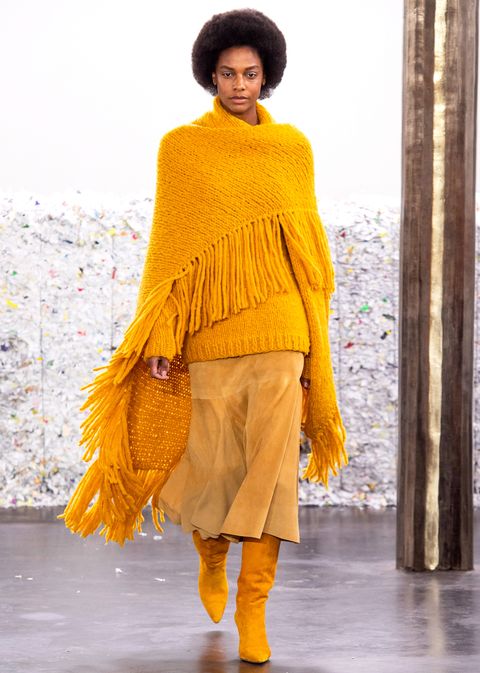
Stephen LovekinShutterstock
When we caught up with Gabriela Hearst this summer, the sustainability champion remained optimistic about the future of the industry. Hearst, who was just awarded Womenswear Designer of the Year by the CFDA, also wanted to set the record straight about the misconception that being green means spending more. She spoke to ELLE as part of our look at the future of fashion:
Do you feel that the current economic climate will help or hinder the sustainability movement?
I actually view COVID-19 as an accelerator for these issues. The sort of hedonistic luxury that was already feeling old before is totally dead now. I think and hope that people will now opt more for craft and quality.
It’s very complex and there are so many layers but if you look at the two main carbon emitters of greenhouse gasses, 1/4 is raw materials and another 1/4 is transportation. Obviously transportation has been slower these days so we’ve been paying a lot of attention to materials. There’s this misconception that we’re living with this endless cornucopia of resources. That’s of course untrue. This virus is of course incredibly dangerous but unlike the climate crisis, it does not threaten our existence as a species.
What have you been working on lately?
I’ve been so focused on ensuring that we take the least amount from this planet, while maintaining our quality and craftsmanship. Starting in 2017, we used only reclaimed items in our show and have since introduced compostable packaging. Most recently, for spring 2020, we introduced a project called the Garment Journey, which is a QR code label that takes you to our website to explain the fabric choices. For example, we chose hemp for one garment because it uses less water and is pesticide free. We selected a specific mill because it uses renewable energy and has all of the certifications that we need in order to have peace of mind.
Your goal is to ultimately use only dead stock and reclaimed fabrics. Is it challenge to find materials of high enough quality?
It’s an incredible challenge. You basically have to go hunting and gathering, talking to mills, and purchase everything upfront, calculating what you can design from it, how much you can sell. And if the fabric is recycled, you have to make sure it’s mechanically, not chemically, done. Our goal this year for the resort collection is to be at least 50% dead stock fabric. I want us to be the luxury trashcan, where we can get the most beautiful, precious materials and transform them into something extraordinary.
So you’re saying that the movement is now more vital than ever?
Post-COVID, we’re all [going to be] using less, spending less. We’re going to want to have things that are made to last. I think the new paradigm is that if you’re a person or a company and you’re in a position to help, you must help. Being sustainable is essential. It’s not a choice. And I think that what sometimes is stopping many people, and certainly large corporations, is the notion that they must be perfect because they will be judged. People are so quick to point out the errors of others rather than celebrating their efforts. I’ve made tons of mistakes along the way. The important thing is that one tries.
There’s a misconception that being environmentally friendly is more costly, but it’s not. It’s a matter of waste. The less wasteful you are, the more economical it is for your company. I was just reviewing our shipping and it was extremely high, so we’re now opting to ship by boat over planes.
How are you approaching next season?
I’m always very skeptical when things move too fast. I’d already purchased the fabric as it’s dead stock and we’ve managed to nearly keep our team intact with no pay cuts, of which I am extremely proud.
One incredibly beautiful thing that happened as a result of the pandemic was when I received the first round of next season’s samples from our Italian suppliers. They were obviously hit very hard and the garments were so perfect; they’d taken so much care. I’d intended for the stitching to be intentionally disheveled but they’d poured so much love into their work, I didn’t have the heart to have them redone.
There’s something so terrifying about not knowing whether you’re going to be able to return to the work that you love. We were able to produce this collection remotely. Now it’s on to part B, which will answer the question of how we show it to the world.
[Editor’s note: In July, Hearst announced she would be presenting her spring 2021 collection on Paris. “When we started to assess with the team what the best course of action was to navigate the changing landscape as a result of the pandemic, we realized that for many reasons it became increasingly clear that we will have to present in Paris from an environmental perspective and from a logistics and transportation perspective,” Hearst said in a statement.]
This interview has been edited and condensed for clarity.
Read More On The Future Of Fashion
This content is created and maintained by a third party, and imported onto this page to help users provide their email addresses. You may be able to find more information about this and similar content at piano.io


